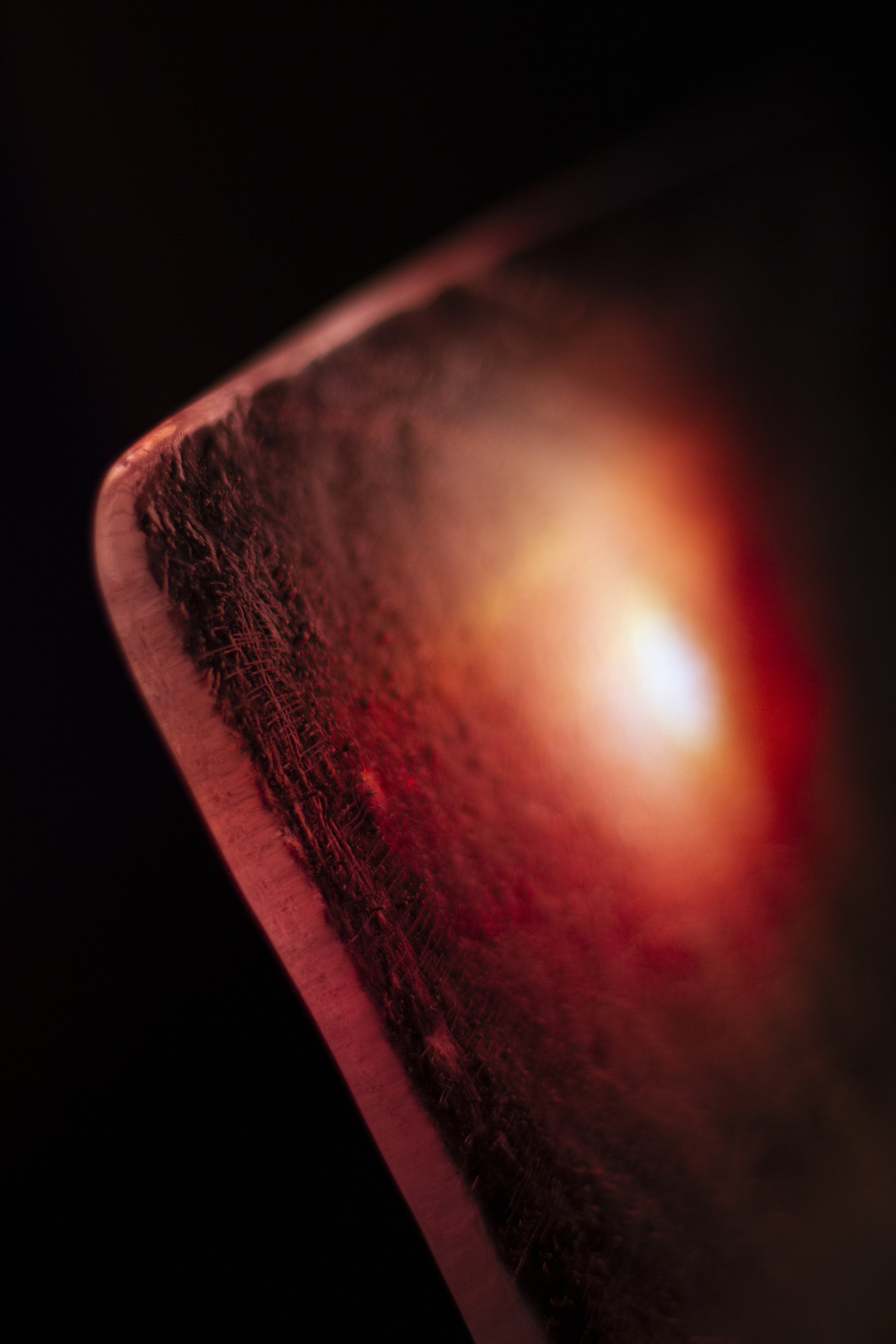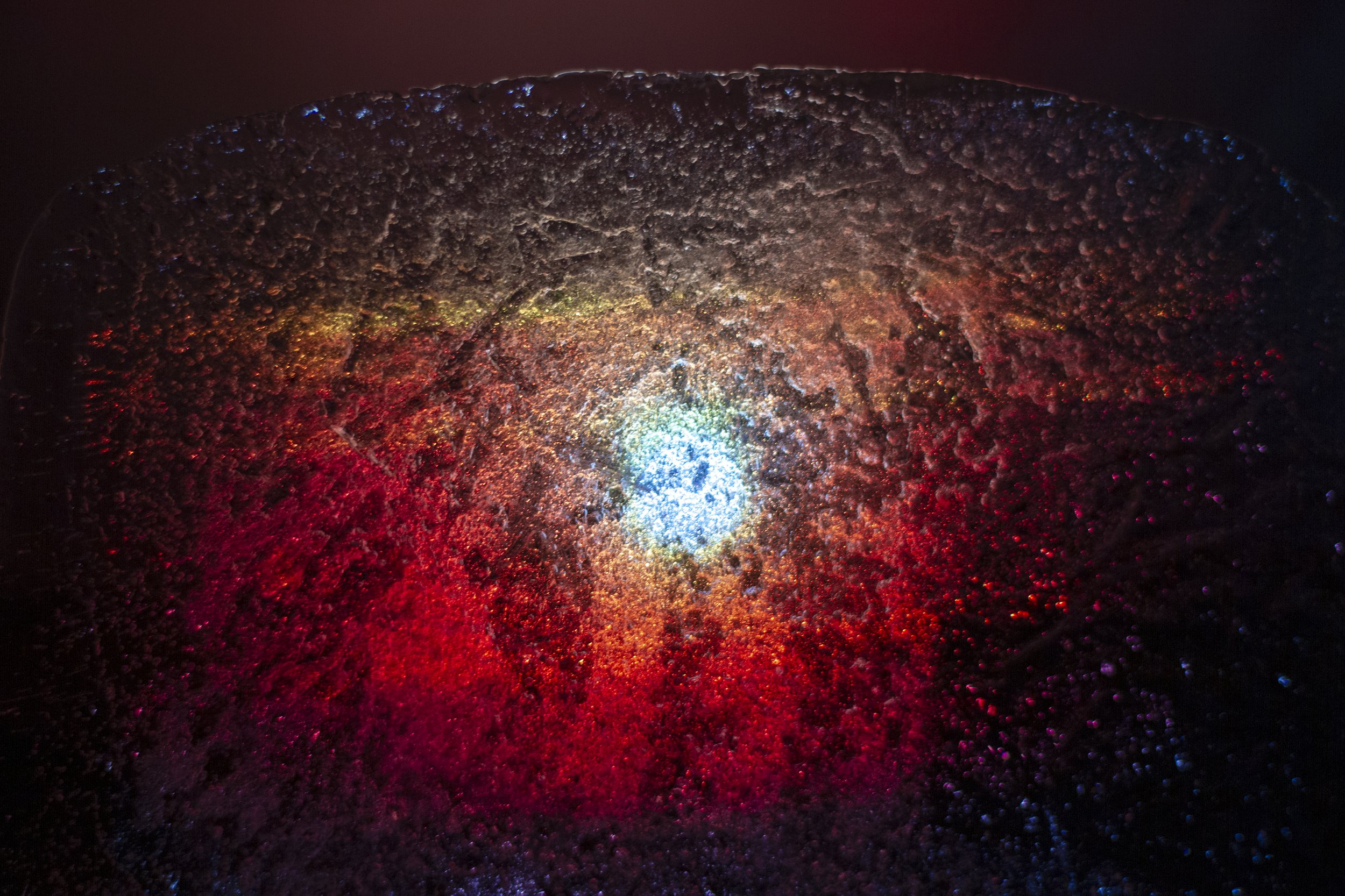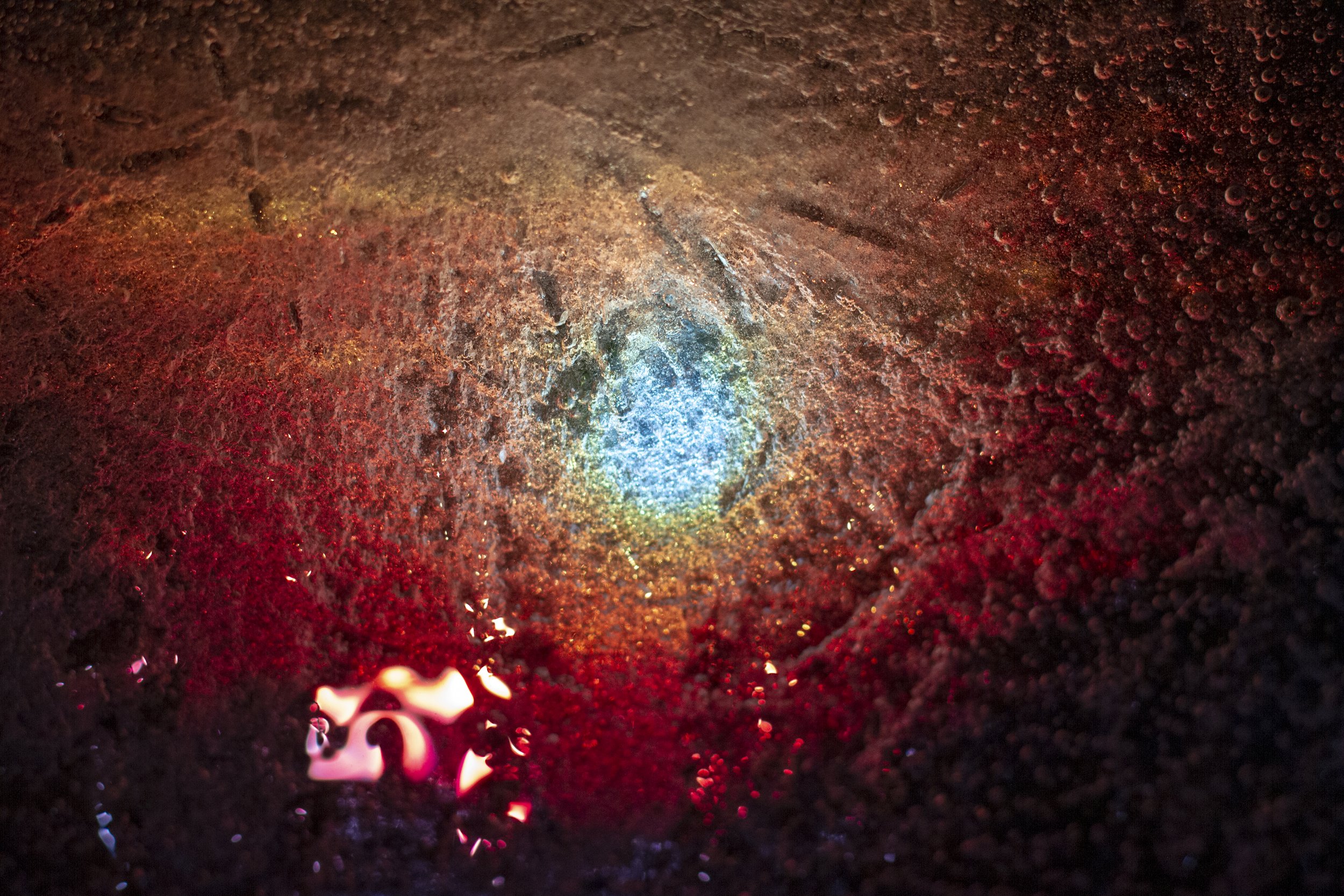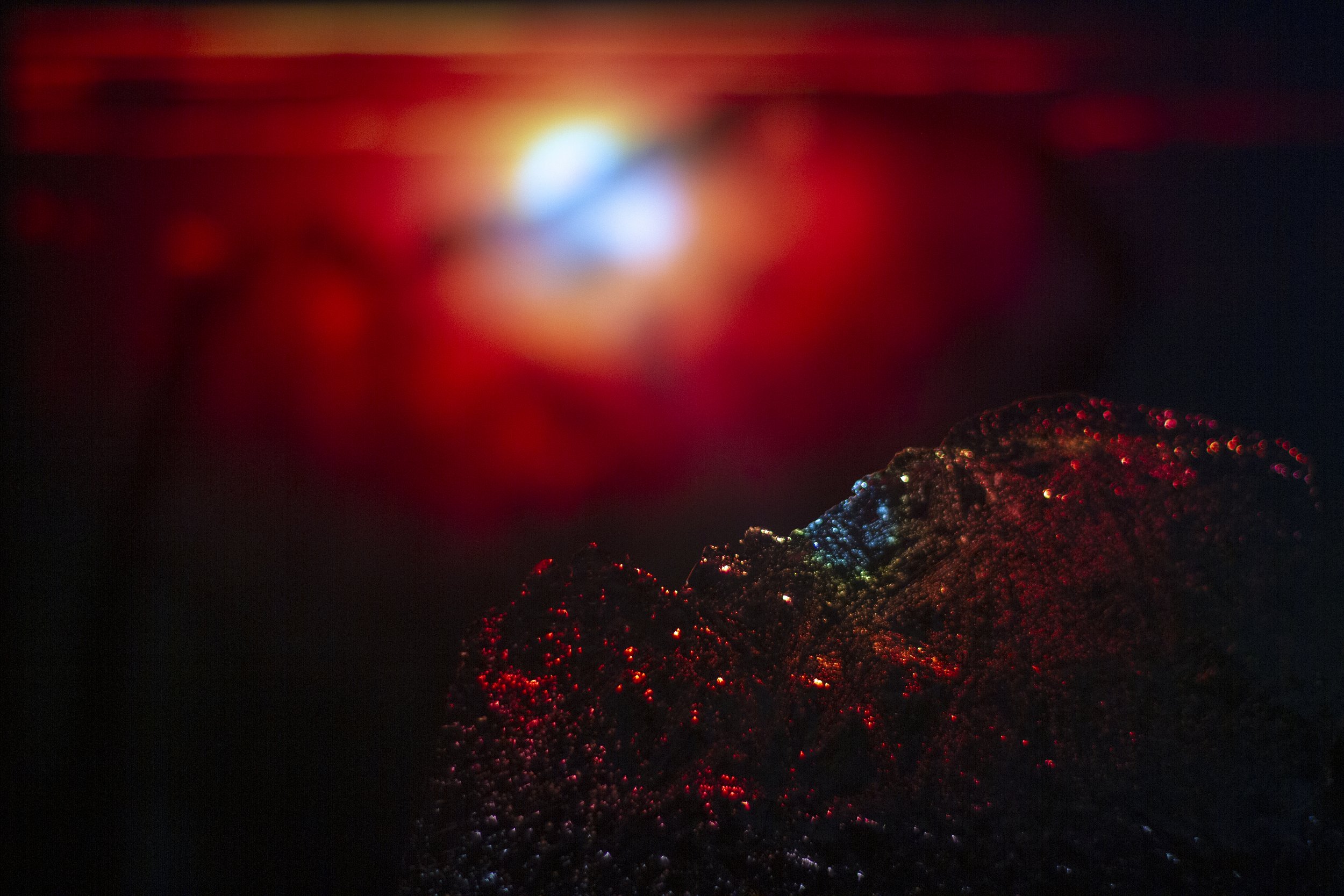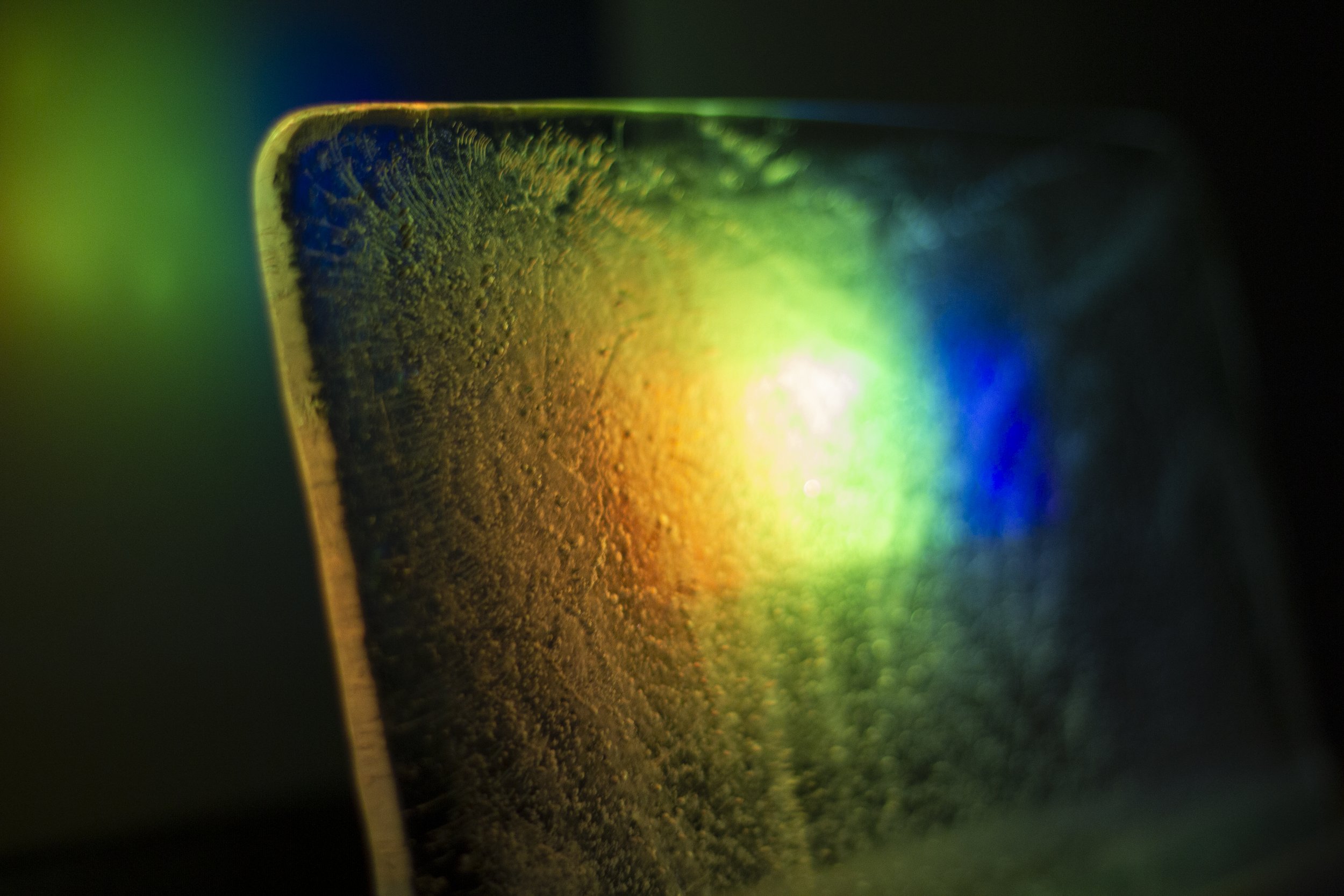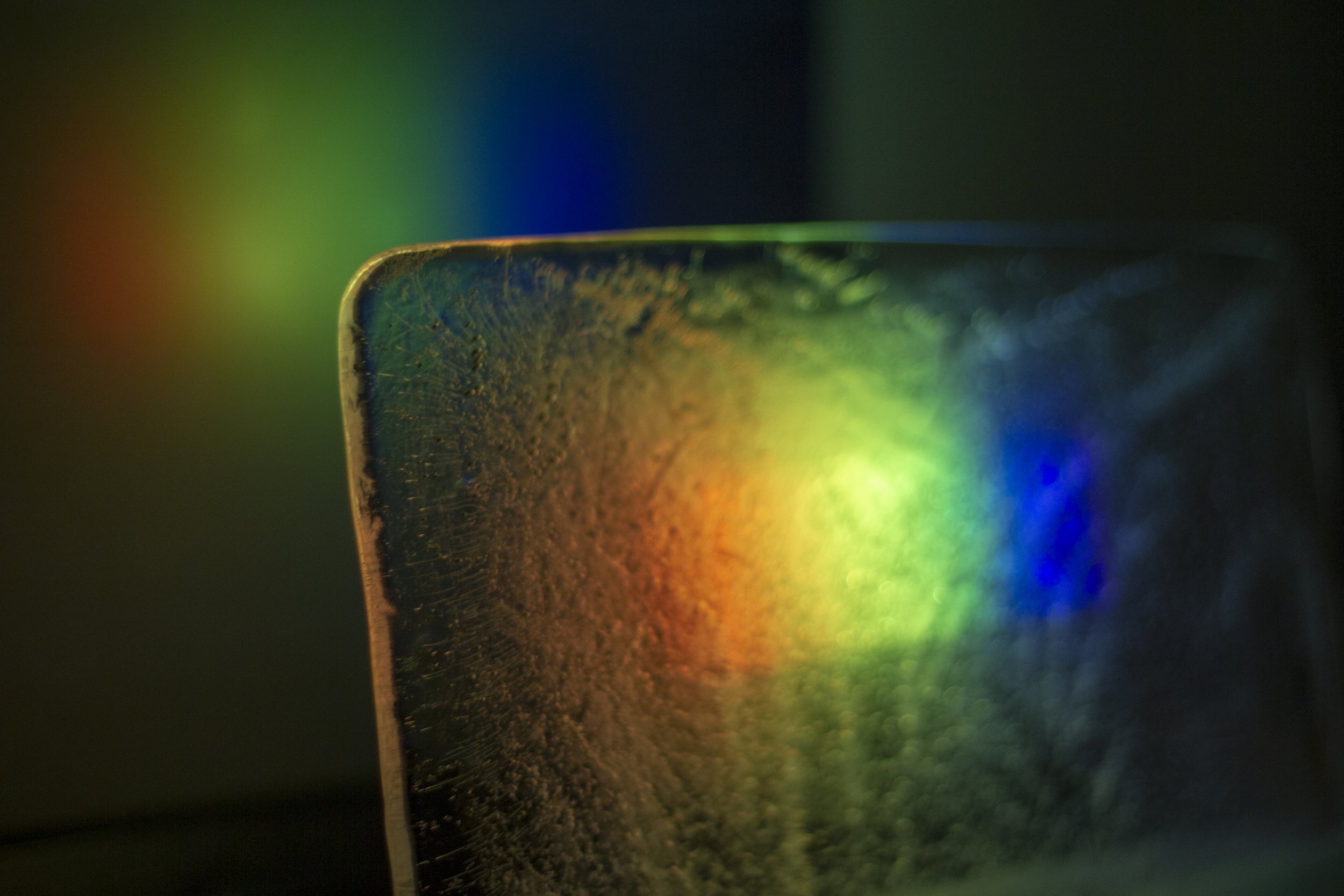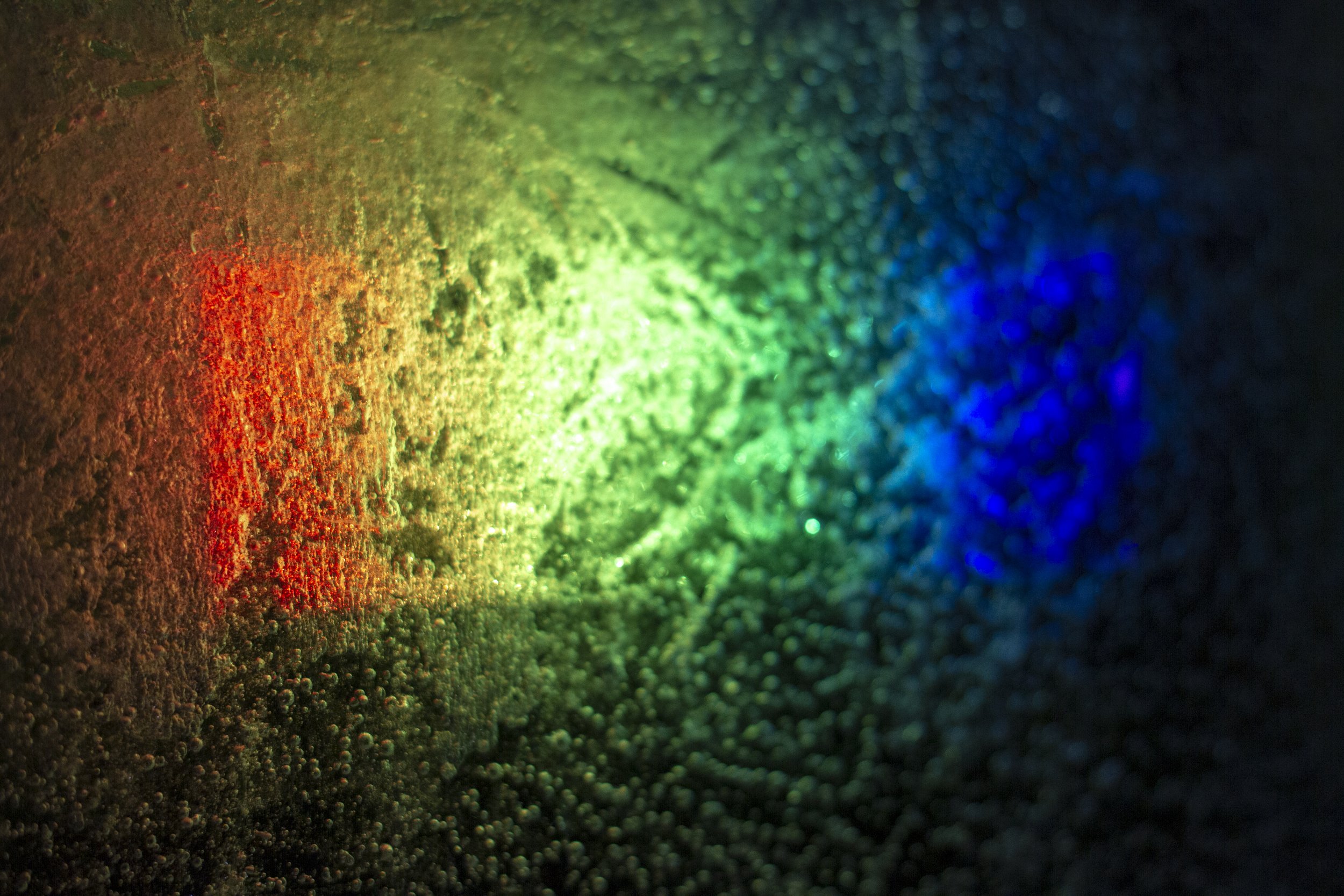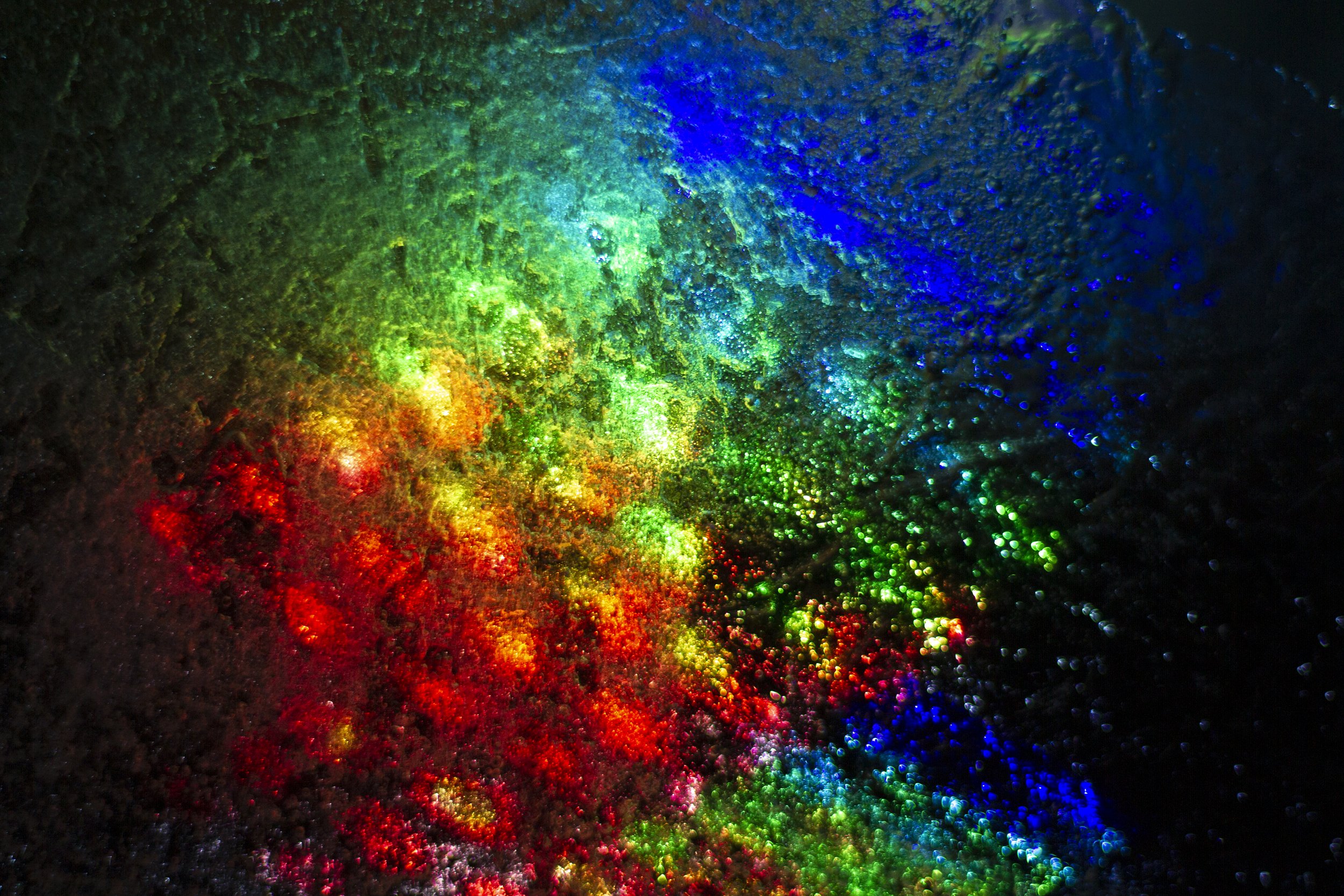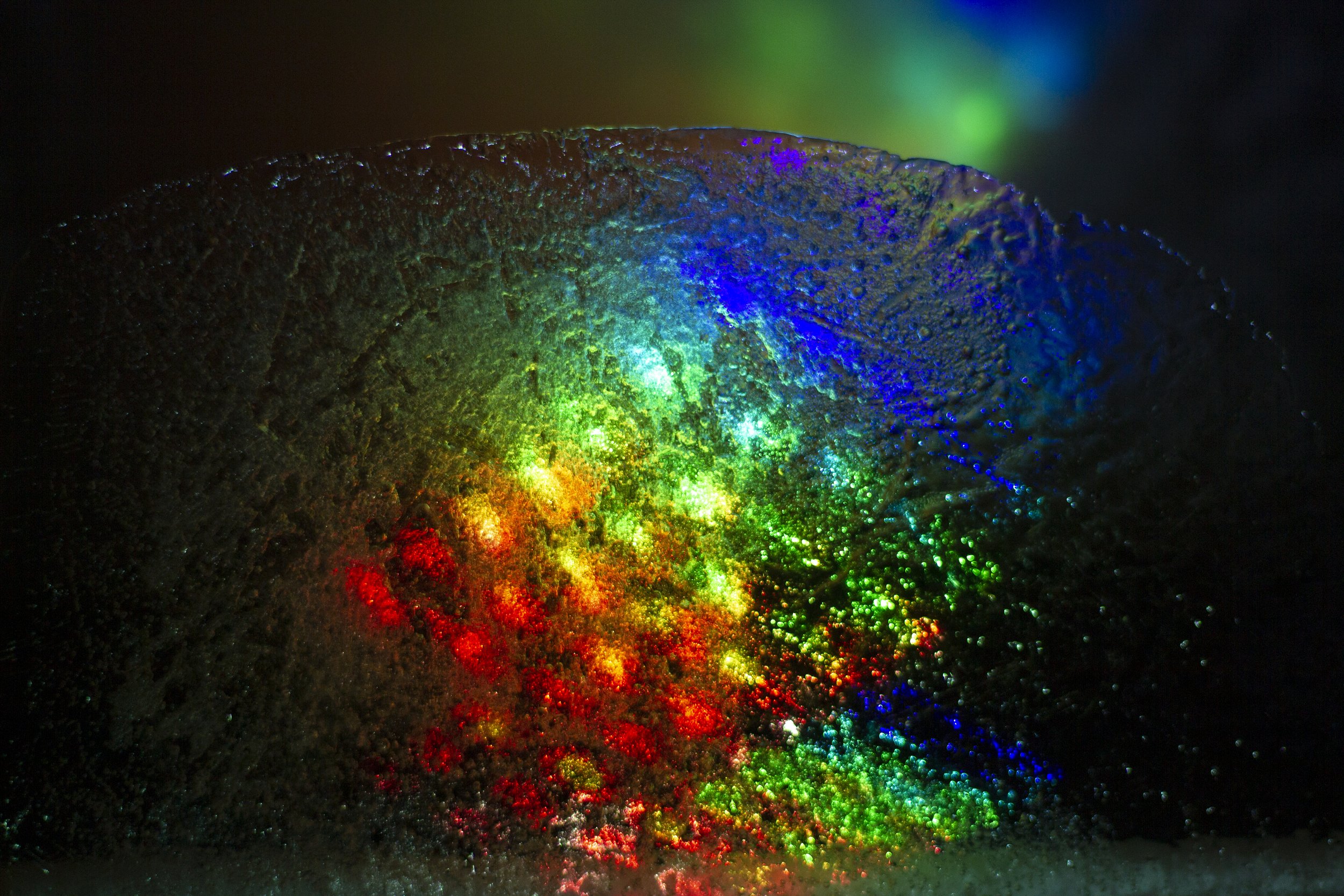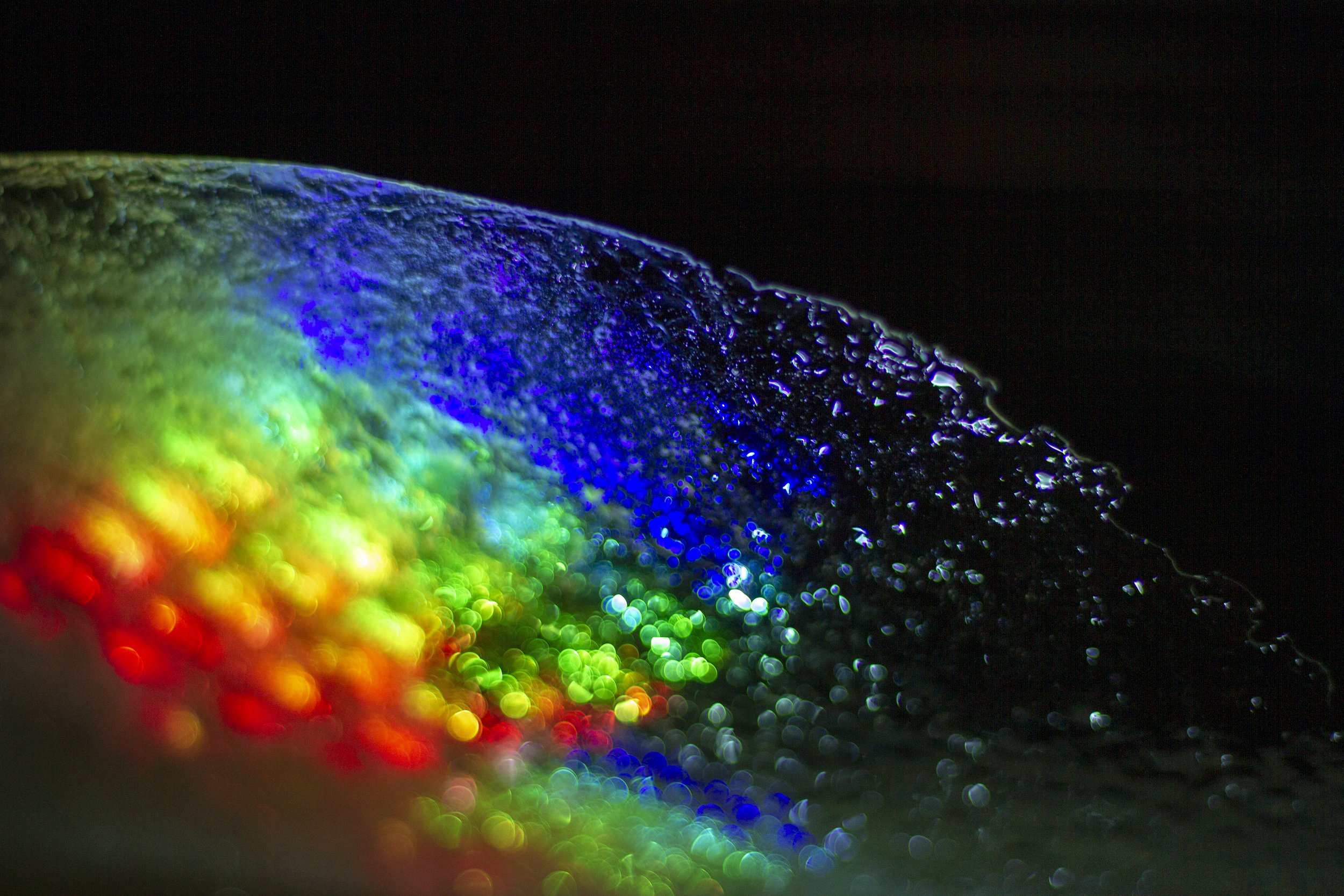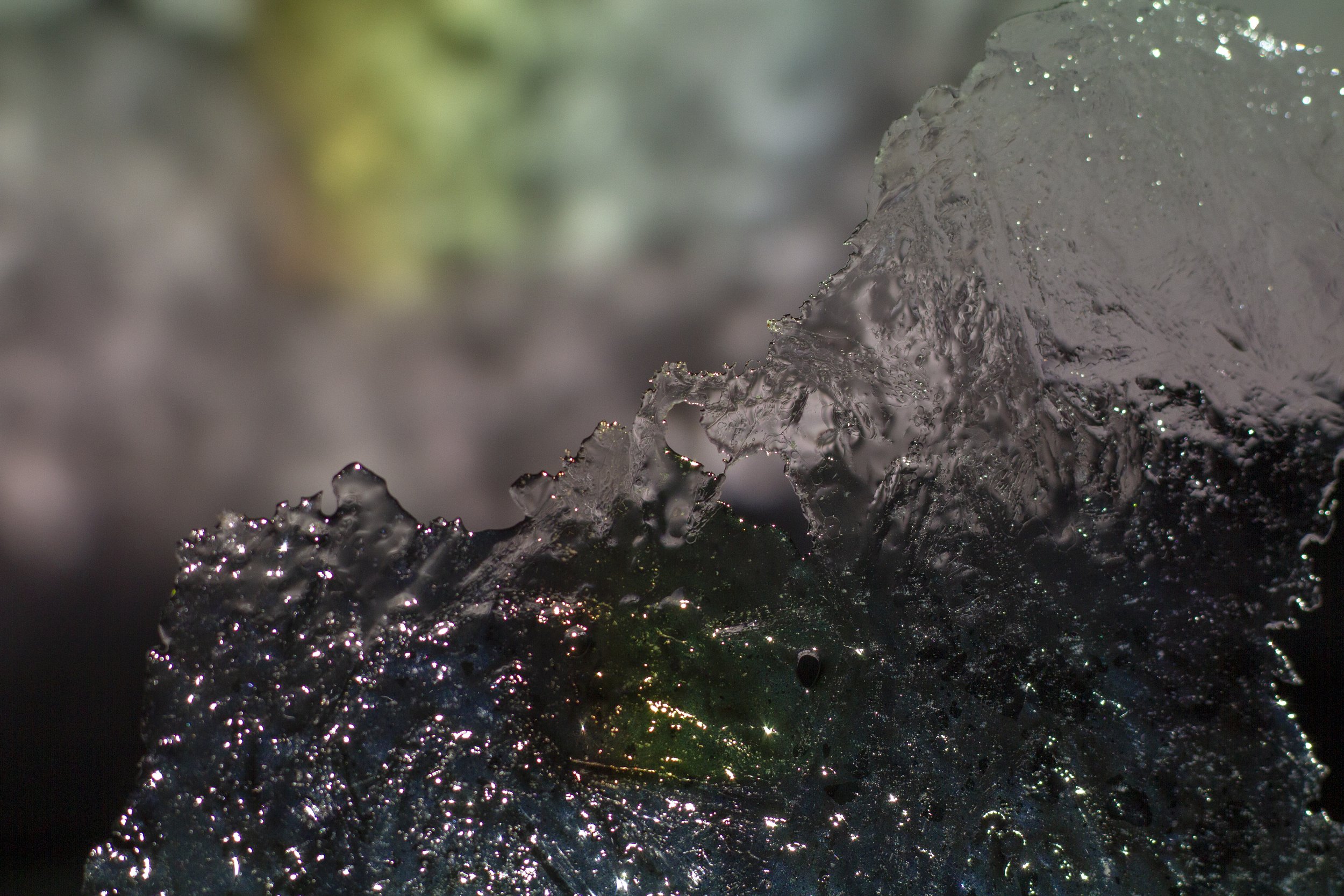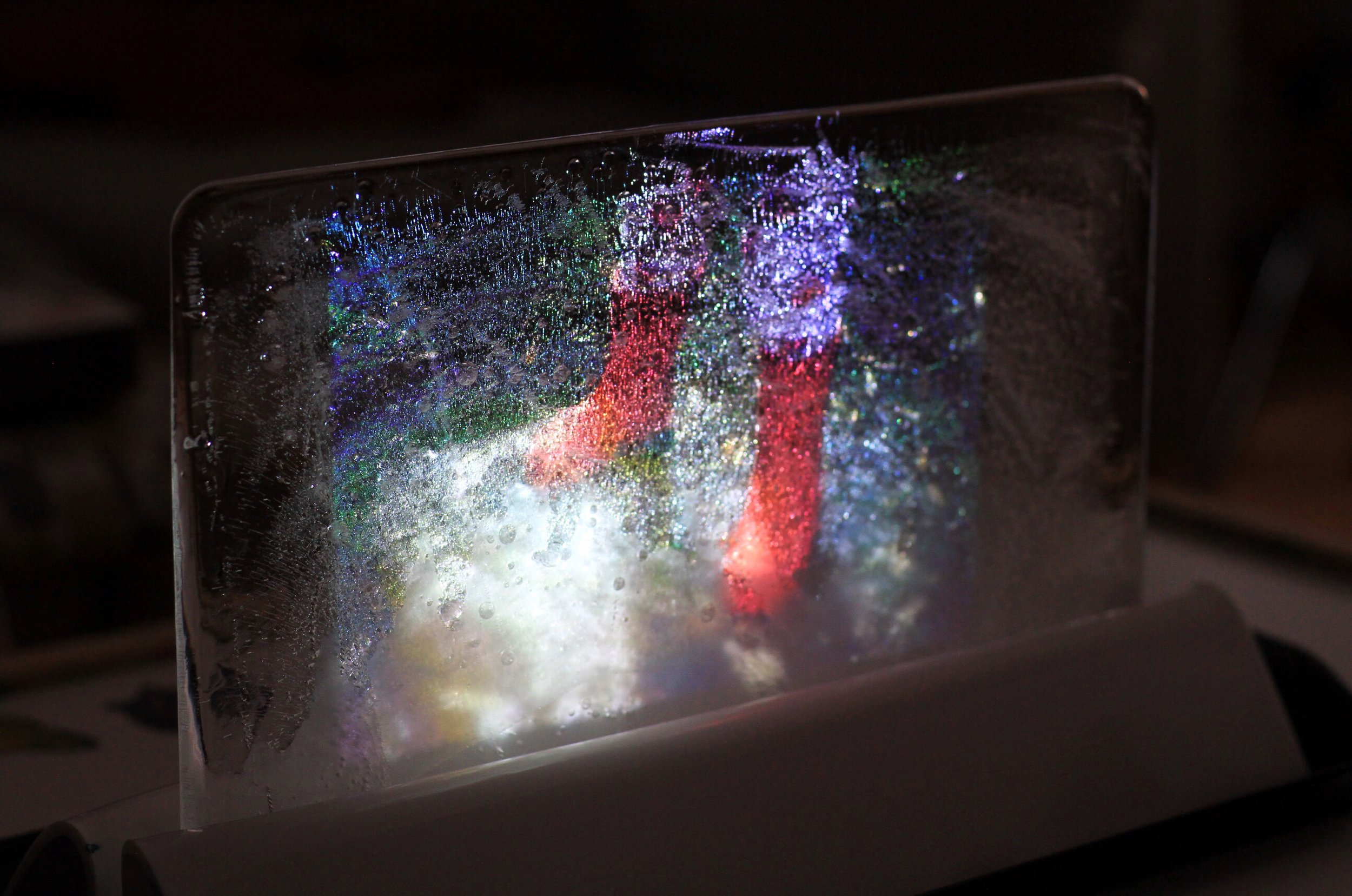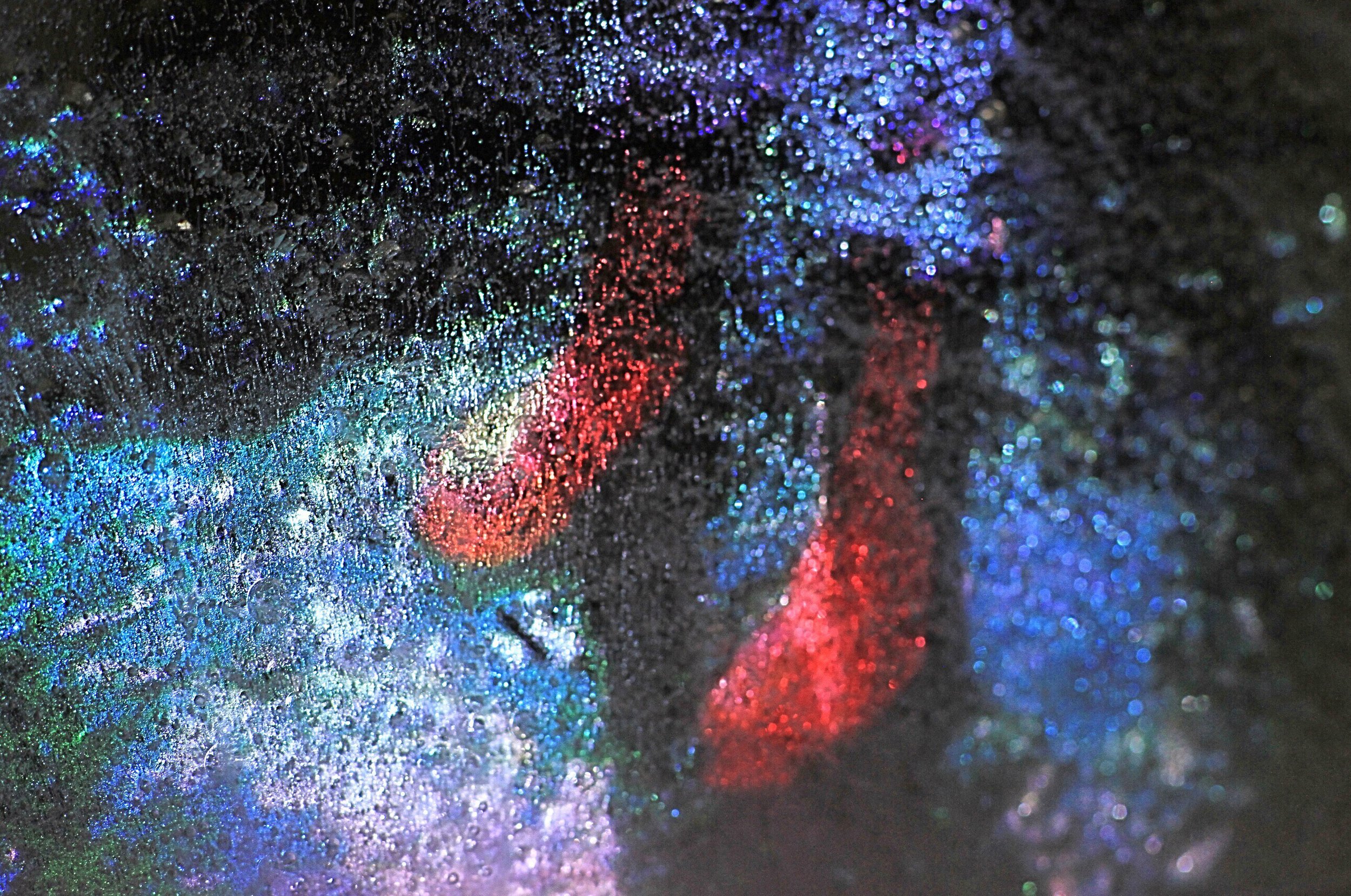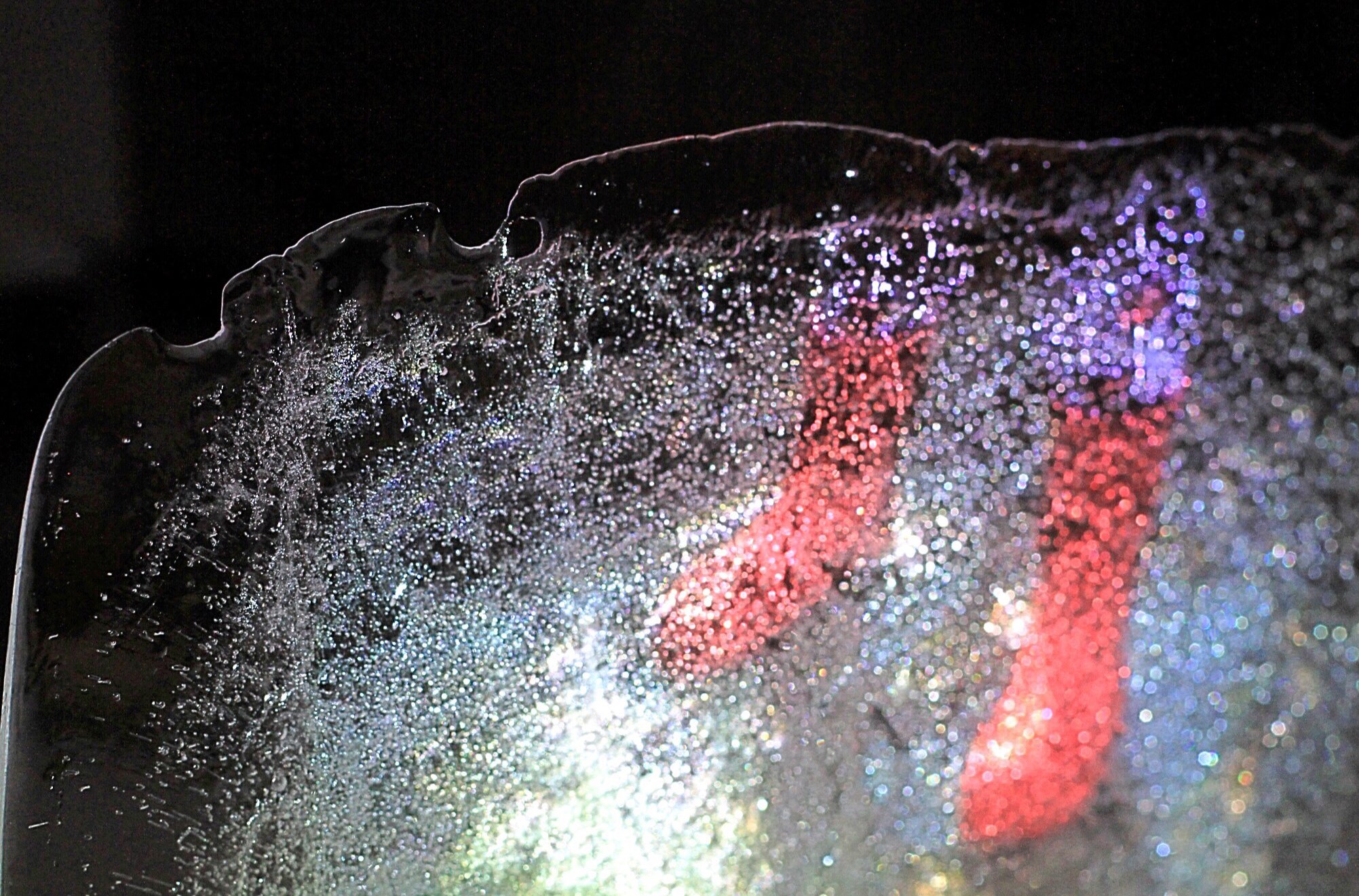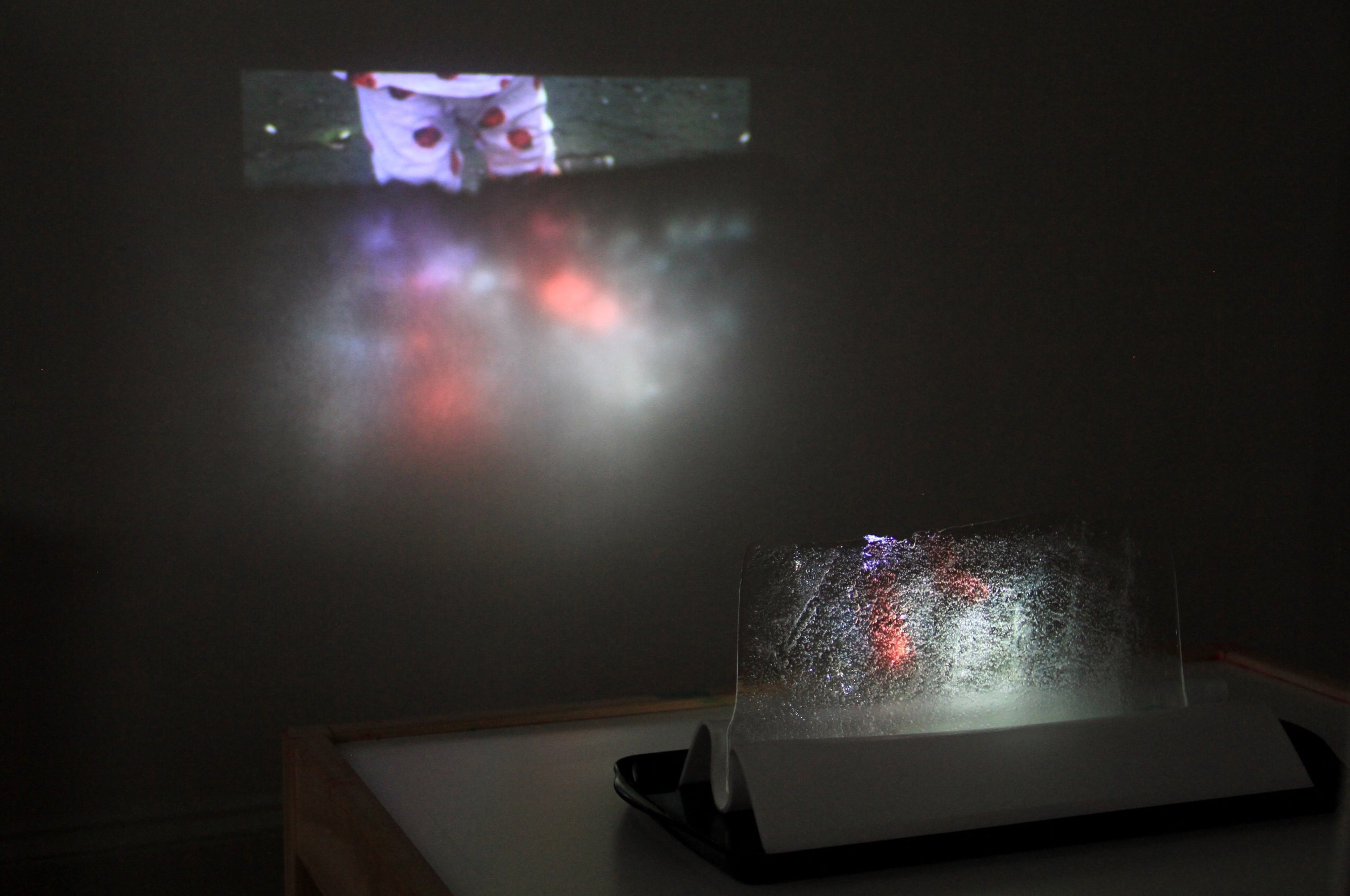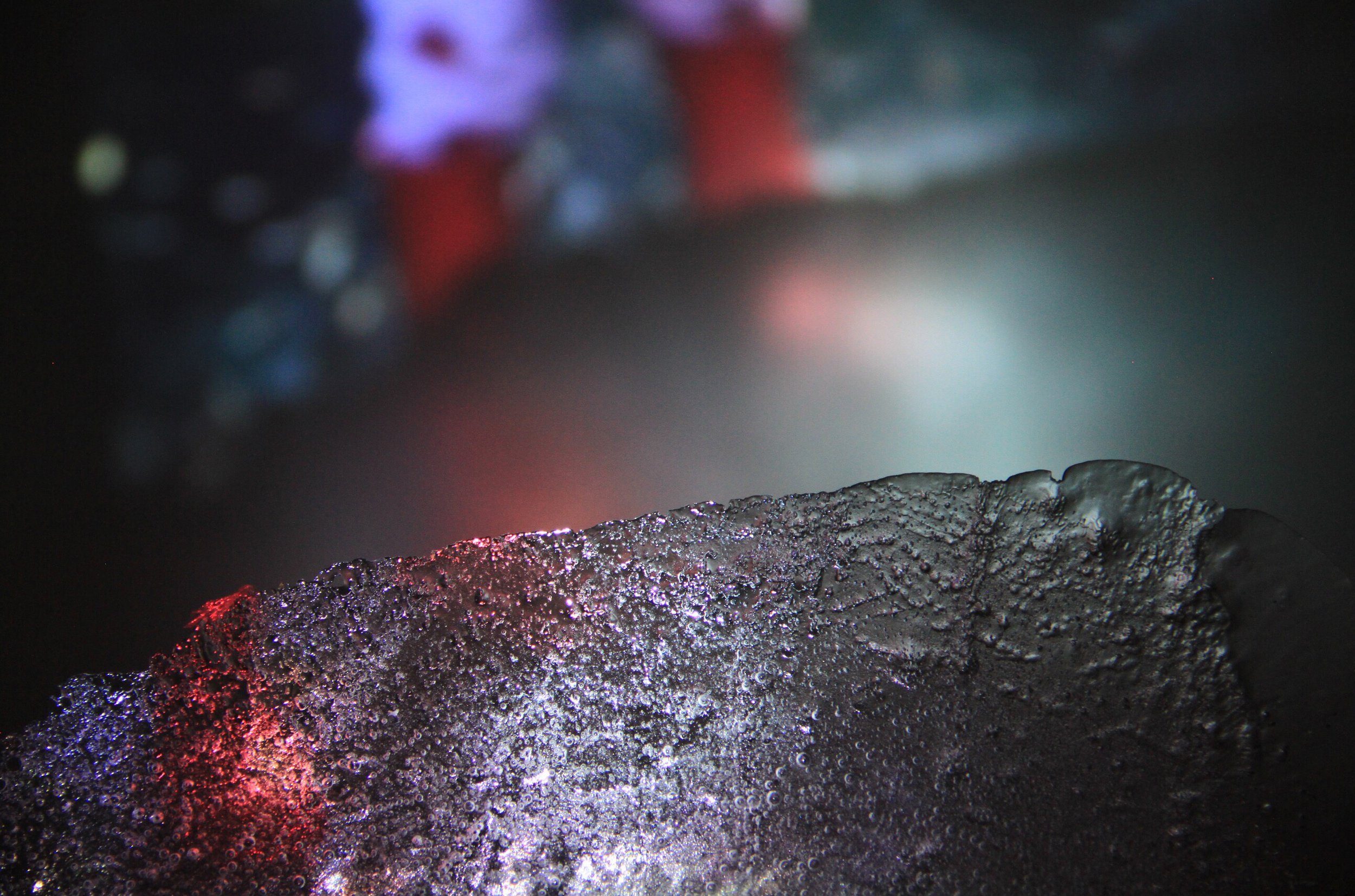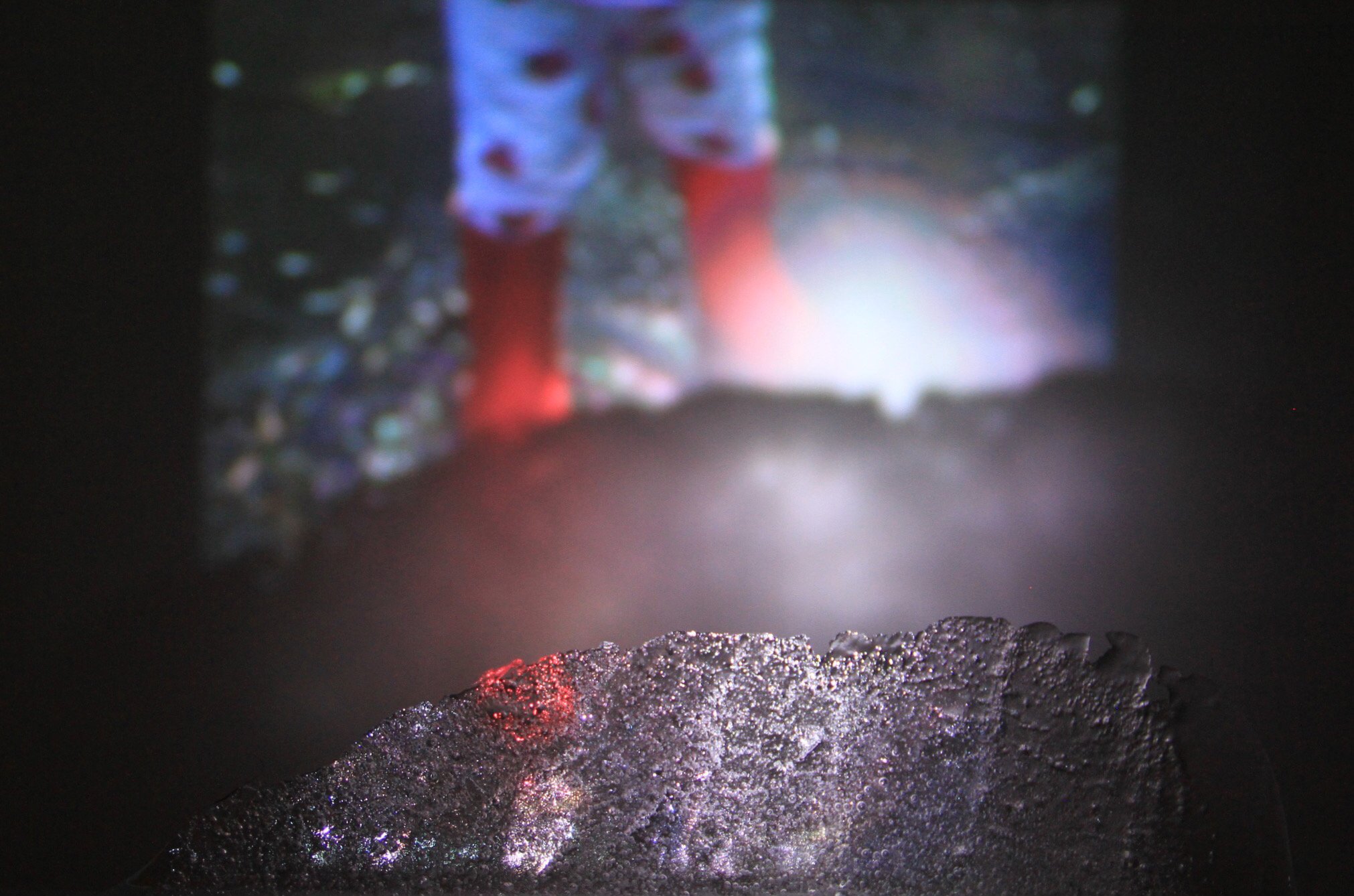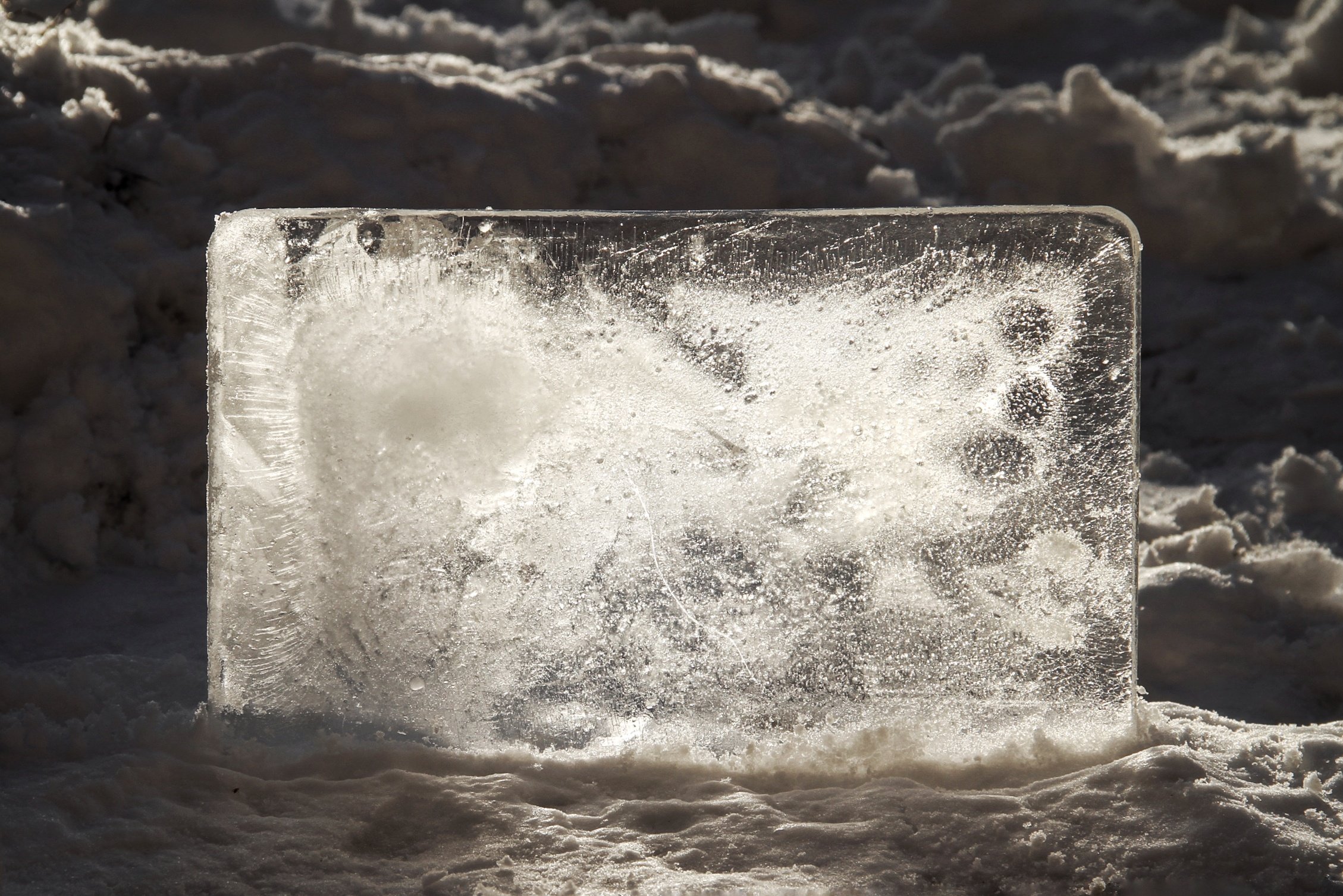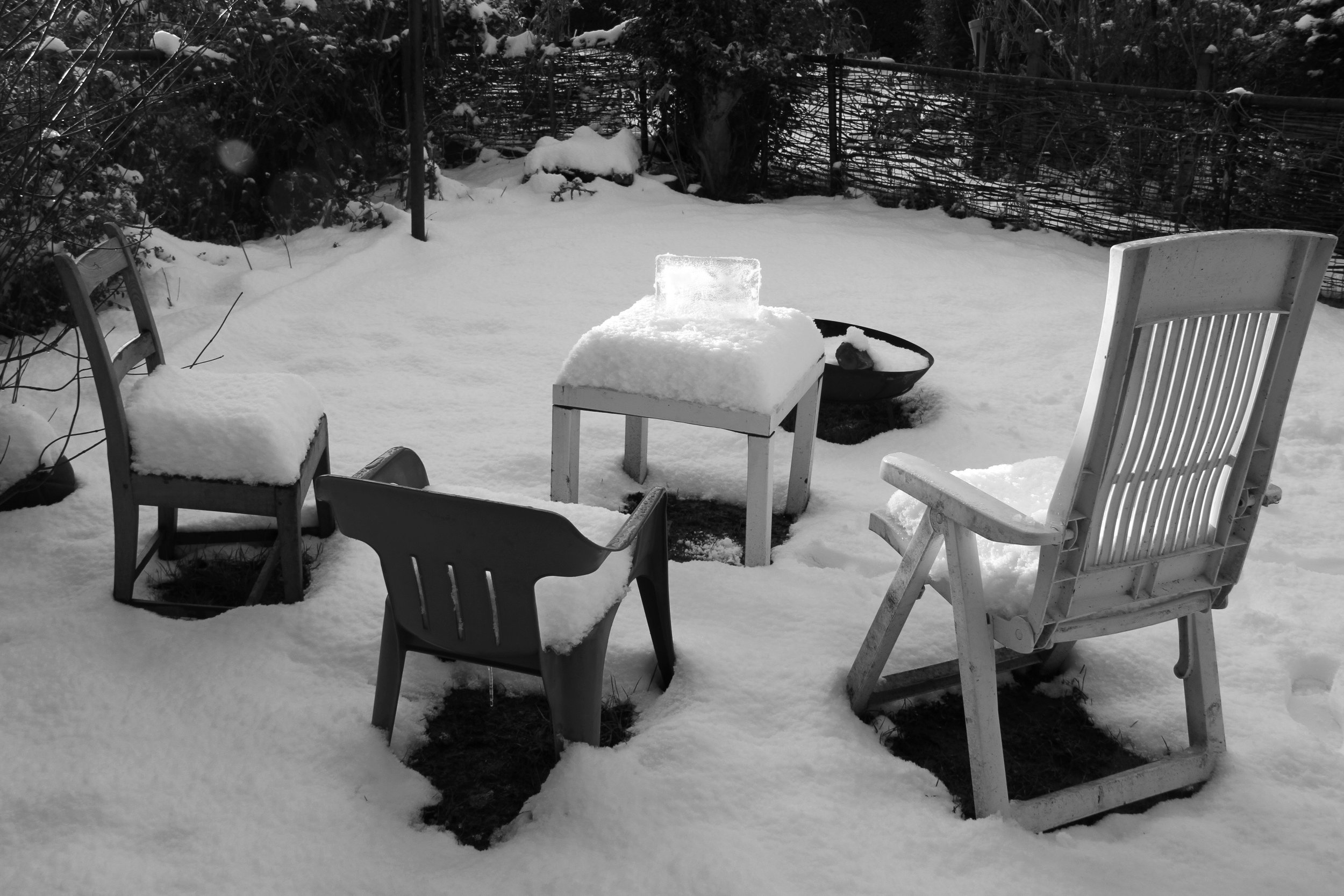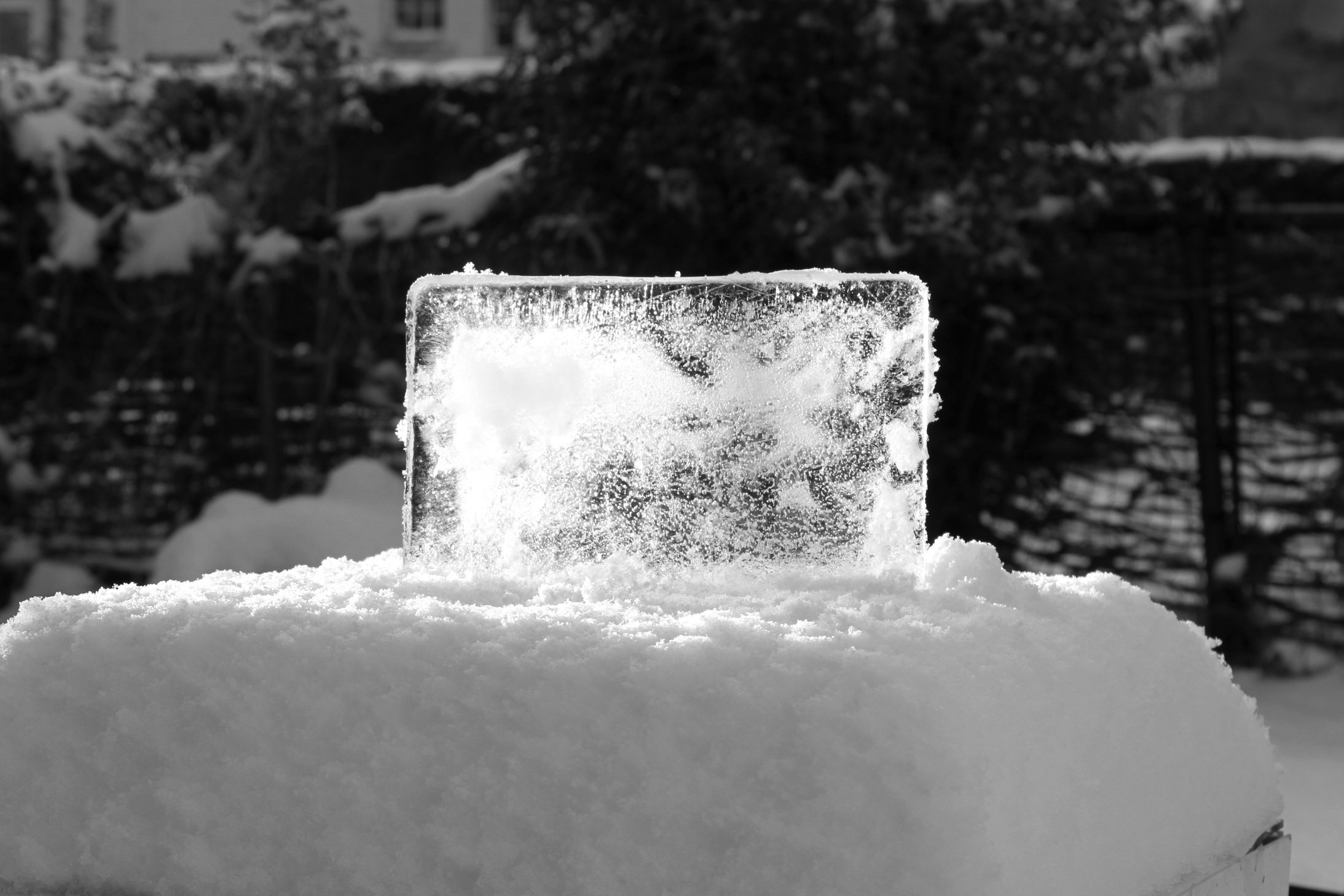ICE SCREENS
In 2019/20 I began making screens from ice. These 16:9 or 4:3 ratio screens, similar in scale to an electronic tablet, are made in my home-freezer. Encountering the ice-sheets is something that most of us will not physically experience – they are geographically remote and huge in scale. The domestic scale of these screens provides a counterpoint to this reality – a human scale relation to the vast terrestrial process of the global ice-melt.
Screen as surface
Initial experiments with projection onto the screens focused on the aesthetic possibilities of the surface. The images collected here document projections of popular and scientific images (a sunset, the visible light spectrum and an image of light as both photon and wave – all publicly available online) onto the surface of the screens.
The qualities of the domestic-freezer-made ice – transparent in some areas, opaque in others, containing bubbles and crystallization patterns – gives the projected image a peculiar depth and solidity in places, while in others the image appears to break down into discrete particles, bringing to mind pixels or the grain of an enlarged analogue print.
The projected image is visible only on the white areas of the ice and on the imperfections of its surface. Where the ice is clear, the light passes through the screen completely. As the ice-screens melt, the projected image is ‘revealed’ on any surface it can find beyond.
Screen as Narrative
A projection of a looping video of a child’s (my then two-year-old daughter’s) feet stamping in a puddle (a common narrative trope to invoke the innocence and freedom of childhood). Over time the repetitive splashing of the light-scattering red wellington boots in the puddle of water begins to connect with the melting of the ice – as if the action of the stamping itself contributes to the disintegration of the melting screen.
Screen as OBJECT
In January/February 2021 it snowed in Edinburgh. I worked with positioning the ice-screen in an outdoor landscape, focusing attention on them not only as surface for projection but as objects in themselves, photographing them outdoors using only the light of the sun.
The titling of these images – It’s not in the cloud, Warming up, Have you tried turning it on and off again? – evokes the language used to describe our experience of using computerised technology situating the ice-screen in our everyday experience. In drawing attention to the ubiquity of the screens that furnish our daily lives, the uncanniness of a screen made from ice is underlined. Rather than reveal an image (as screens are wont to do), the screens in their full form in these photographs obscure the landscape they are situated in.


